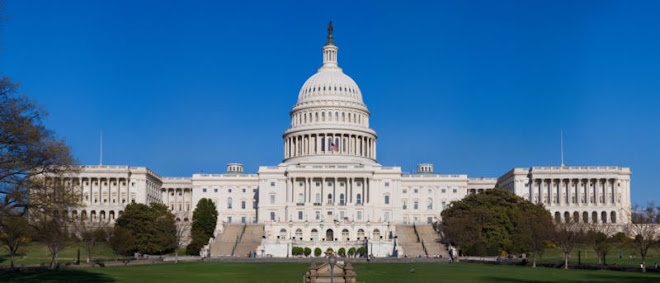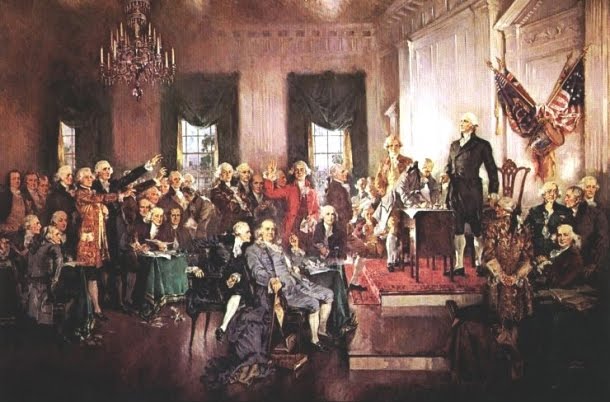From The Heritage Foundation:
Read Before You Vote
A budget agreement that fell short in dollars but was advertised as "the largest spending cut in history" is being challenged by new reports that the old ways of Washington have yet to be overcome. News outlets such as The Washington Post, Fox News and the Associated Press suggest "creative accounting" may have been used to get to the figure of $38.5 billion in cuts. We're still pouring through the numbers, but this is a good time to remind the public that Congress needs to do the opposite of what former Speaker Nancy Pelosi (D-Ca.) recommended last year when she said "we have to pass the bill so that you can find out what is in it."
The National Journal reports: "…the final cuts in the deal are advertised as $38.5 billion less than was appropriated in 2010, but after removing rescissions, cuts to reserve funds, and reductions in mandatory spending programs, discretionary spending will be reduced only by $14.7 billion."
Clearly, $14.7 billion cut from a $3.5 trillion budget is less than advertised and far less than expected. So far, our initial analysis has found at least $12.2 billion and as much as $20.6 billion in cuts in the final agreement should be reviewed thoroughly. These include $6.2 billion from the 2010 Census and it remains to be seen how much of that spending would have ended regardless. Then there’s $6 billion from rescissions of funds that were not likely to be spent anyway.
The AP reports: "The details of the agreement reached late Friday night just ahead of a deadline for a partial government shutdown reveal a lot of one-time savings and cuts that officially 'score' as cuts to pay for spending elsewhere, but often have little to no actual impact on the deficit."
Granted, there are real cuts in this package. But what is the long-term effect on the deficit as a result of this compromise? Members of Congress must take the appropriate time to review the budget before passing it. House leaders promised 72 hours of public review time on legislation. The public should take the time to review the nature of the cuts carefully.
The House appropriately debated their initial package of $61 billion in cuts at great length, in public and with a great deal of transparency. But a similar Senate debate never took place.
This could have all been avoided if the Senate had simply done its job and debated the budget rather than Majority Leader Harry Reid (D-Nv.) punting that legislative responsibility to the White House. However, with a government shutdown looming as result of Reid's negligence, the American public was treated as bystanders rather than watchdogs.
In the end, there is no arguing that cuts were made and many ineffective government programs were terminated. We have still moved a great deal from the days of trillion dollar "stimulus" packages and the failed notion that government growth equates to economic growth. But if they are to achieve serious reform on behalf of the American people as they debate the 2012 budget and the debt limit, lawmakers must reject the business-as-usual practices of Washington.
To preserve credibility with the American people, Congress must clearly articulate what specific spending cuts do and don't do to address out-of-control spending and reduce our nation's deficits and debts. And Congress must act in a transparent fashion and deliver real cuts that deliver substantial savings over the long-term. Only then will the culture of our nation's capital indeed be transformed, and the real spending reforms that are necessary to put America's fiscal future on a sustainable path will be realized.
Read Before You Vote
A budget agreement that fell short in dollars but was advertised as "the largest spending cut in history" is being challenged by new reports that the old ways of Washington have yet to be overcome. News outlets such as The Washington Post, Fox News and the Associated Press suggest "creative accounting" may have been used to get to the figure of $38.5 billion in cuts. We're still pouring through the numbers, but this is a good time to remind the public that Congress needs to do the opposite of what former Speaker Nancy Pelosi (D-Ca.) recommended last year when she said "we have to pass the bill so that you can find out what is in it."
The National Journal reports: "…the final cuts in the deal are advertised as $38.5 billion less than was appropriated in 2010, but after removing rescissions, cuts to reserve funds, and reductions in mandatory spending programs, discretionary spending will be reduced only by $14.7 billion."
Clearly, $14.7 billion cut from a $3.5 trillion budget is less than advertised and far less than expected. So far, our initial analysis has found at least $12.2 billion and as much as $20.6 billion in cuts in the final agreement should be reviewed thoroughly. These include $6.2 billion from the 2010 Census and it remains to be seen how much of that spending would have ended regardless. Then there’s $6 billion from rescissions of funds that were not likely to be spent anyway.
The AP reports: "The details of the agreement reached late Friday night just ahead of a deadline for a partial government shutdown reveal a lot of one-time savings and cuts that officially 'score' as cuts to pay for spending elsewhere, but often have little to no actual impact on the deficit."
Granted, there are real cuts in this package. But what is the long-term effect on the deficit as a result of this compromise? Members of Congress must take the appropriate time to review the budget before passing it. House leaders promised 72 hours of public review time on legislation. The public should take the time to review the nature of the cuts carefully.
The House appropriately debated their initial package of $61 billion in cuts at great length, in public and with a great deal of transparency. But a similar Senate debate never took place.
This could have all been avoided if the Senate had simply done its job and debated the budget rather than Majority Leader Harry Reid (D-Nv.) punting that legislative responsibility to the White House. However, with a government shutdown looming as result of Reid's negligence, the American public was treated as bystanders rather than watchdogs.
In the end, there is no arguing that cuts were made and many ineffective government programs were terminated. We have still moved a great deal from the days of trillion dollar "stimulus" packages and the failed notion that government growth equates to economic growth. But if they are to achieve serious reform on behalf of the American people as they debate the 2012 budget and the debt limit, lawmakers must reject the business-as-usual practices of Washington.
To preserve credibility with the American people, Congress must clearly articulate what specific spending cuts do and don't do to address out-of-control spending and reduce our nation's deficits and debts. And Congress must act in a transparent fashion and deliver real cuts that deliver substantial savings over the long-term. Only then will the culture of our nation's capital indeed be transformed, and the real spending reforms that are necessary to put America's fiscal future on a sustainable path will be realized.










No comments:
Post a Comment